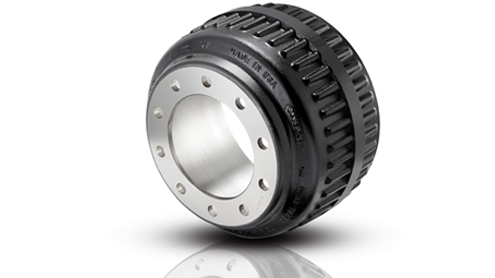
There is more to green than engine emissions and alternative fuels
By Ken Kelley
 An evaluation of green initiatives within the bus industry typically focuses on engine emissions, alternative fuels and disposal of spent fluids. It may come as a surprise to find with a little further probing into the operation and maintenance of most buses and coaches other systems and components offer opportunities for green initiatives. One such example is how environmental awareness in the purchase of brake components may also contribute to a green initiative.
An evaluation of green initiatives within the bus industry typically focuses on engine emissions, alternative fuels and disposal of spent fluids. It may come as a surprise to find with a little further probing into the operation and maintenance of most buses and coaches other systems and components offer opportunities for green initiatives. One such example is how environmental awareness in the purchase of brake components may also contribute to a green initiative.
Over the past decade the economy has been brutal on the North American transportation sector. Rising operation costs and shrinking margins have forced many fleets to resort to taking the lowest cost approach in their selection of vehicle replacement components. However, the lowest cost component may actually increase operating cost. Some interesting results can develop when fleets shift their component sourcing strategy from one of acquisition cost to cost of ownership, which also may provide green results.
A bus fleet operating with a high frequency of stops will naturally go through more brake drums, brake shoes and brake-related components compared to on-highway vehicles with a lower stopping frequency. The operators of this bus fleet may be tempted to take the low cost route to purchasing brake-related components. However, they must be very careful in evaluating components based on price alone. The should first consider the original brake drums were designed with a specific weight, construction and metallurgy for that particular bus application to optimize braking performance. Where the main purpose of brake drums is to absorb and dissipate braking energy, a less expensive drum may be available but at the expense of it having less mass or varying metallurgy, or both. This may result in higher operating brake temperatures and higher life cycle cost.
This is where it gets interesting. A fleet operator may choose to purchase lower cost brake drums and brake shoes, which on the surface appears to be a simple way to save money. Savings are very easy to measure: the cost of component-A minus the cost of component-B. The fact remains, not all brake components are created equal. Suppose the lower cost brake components do not last as long, requiring the operator to perform three brake jobs per year on the vehicle as opposed to the normal frequency of twice a year.
Consideration of the operating cost of components rather than the acquisition cost creates an entirely different scenario. Not only would this fleet have to bear the extra brake drum and brake shoe costs required for a third brake job each year, it would also have to purchase and replace other ancillary components such as brake hardware, camshaft bushings and associated labor. In the end these higher life cycle costs may easily eclipse any savings gained by purchasing less expensive components.
How does this relate to green initiatives? Minimizing the frequency of brake jobs also reduces the amount of scrap parts disposal. Still, brake drums can be sold for scrap. Brake cores can be relined and reused, while brake linings and related parts such as bushings and springs must be properly disposed. Nonetheless, the aftermath of a brake job often produces a surplus of oil-soaked rags that require proper disposal.
Most suppliers of standard products are more than willing to work with bus fleets and run head-to-head field test programs to evaluate components. It takes slightly longer to develop fleet results, but sound sourcing decisions focused on operation cost rather than acquisition cost will certainly pay dividends in the end. In the end, longer life components not only save operational costs but also generate less scrap material for disposal. BR
Ken Kelley serves as president of Webb Severe Duty, Culman, AL. Webb Wheel is a division of The Marmon Group, a Berkshire Hathaway company.
